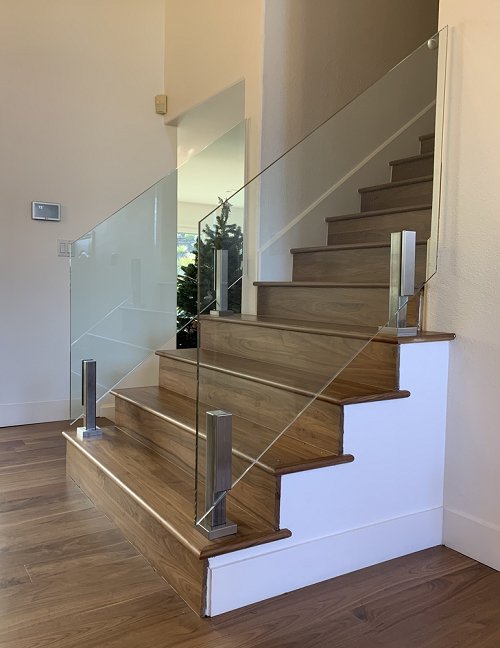Glass Railing Enhance Your Home’s Aesthetic
1. Building Codes and Safety Regulations: Check the local building codes and safety regulations in your area. These guidelines often specify the minimum height requirement for railings based on the location and intended use. Adhering to these standards ensures the safety and compliance of your railing installation.
2. Purpose and Intended Use: Consider the purpose and intended use of the railing. If it’s for a residential balcony or deck, a height that provides a clear view while seated or standing comfortably may be preferred. For commercial settings or areas with higher safety requirements, a taller railing may be necessary.

3. Accessibility and User Needs: Factor in accessibility requirements and the needs of different users. For instance, if the railing is for a wheelchair ramp, it should be at a height that allows individuals in wheelchairs to easily grip and navigate the ramp. Understanding the specific needs of users will help determine the appropriate railing height.
4. Visual Aesthetics: Balance functionality with visual aesthetics. The height of the railing should complement the overall design and architecture of your property. Consider how the railing aligns with the surrounding elements and the desired visual impact.
5. Consult Professionals: When in doubt, consult with professionals such as architects, contractors, or experienced railing installers. They can provide expert advice based on their knowledge and experience, ensuring that the height of your stainless steel railing meets safety standards and fulfills your specific requirements.
Remember, the ideal height for your stainless steel railing will depend on a combination of factors, including regulations, functionality, accessibility, aesthetics, and professional guidance. By considering these tips and seeking expert advice, you can make an informed decision and achieve a railing height that is both safe and visually appealing.

 +86 159 6420 9667
+86 159 6420 9667  sales@haxrailing.com
sales@haxrailing.com 



